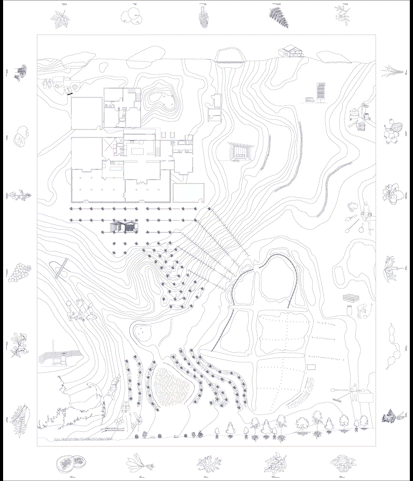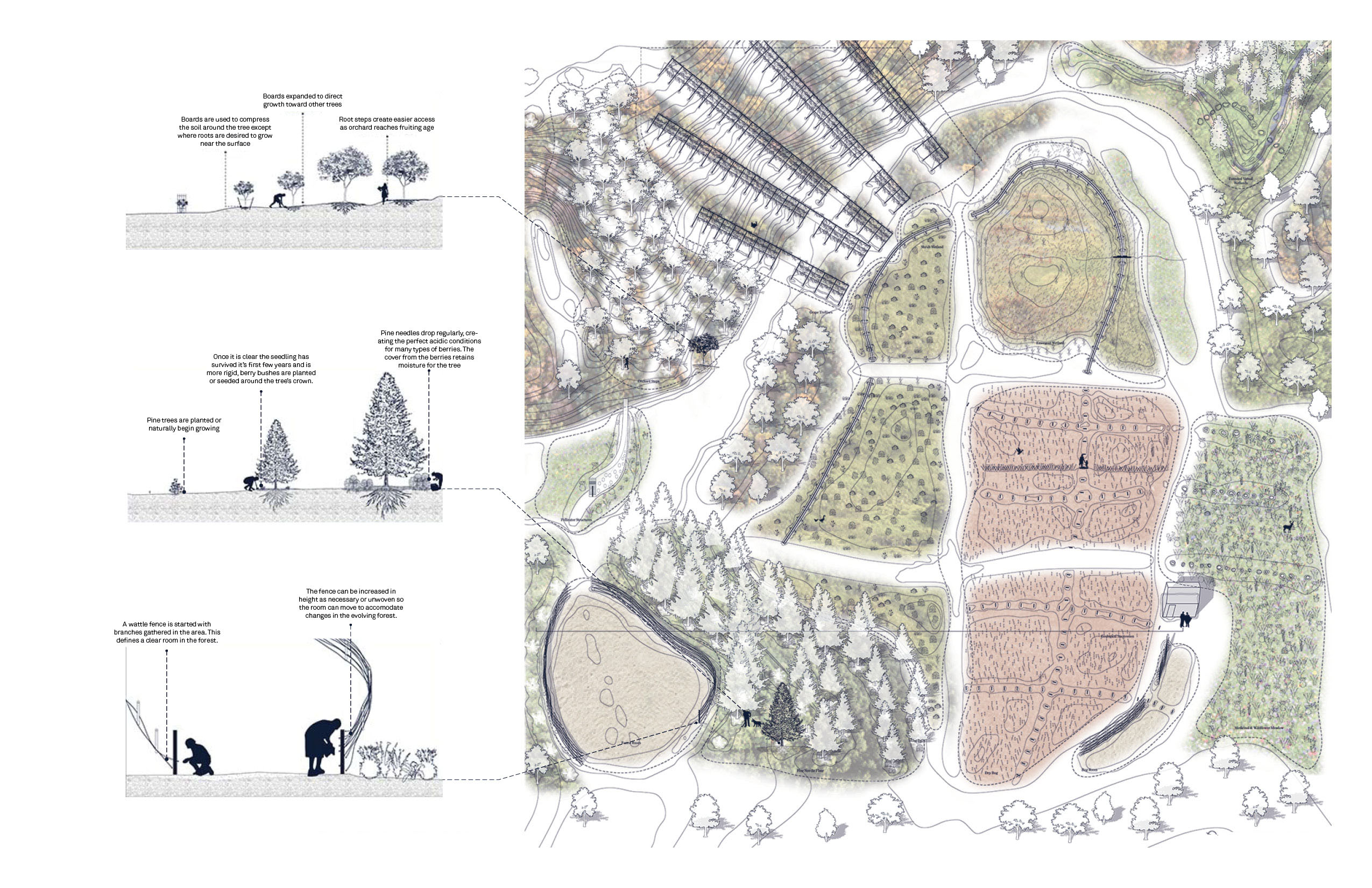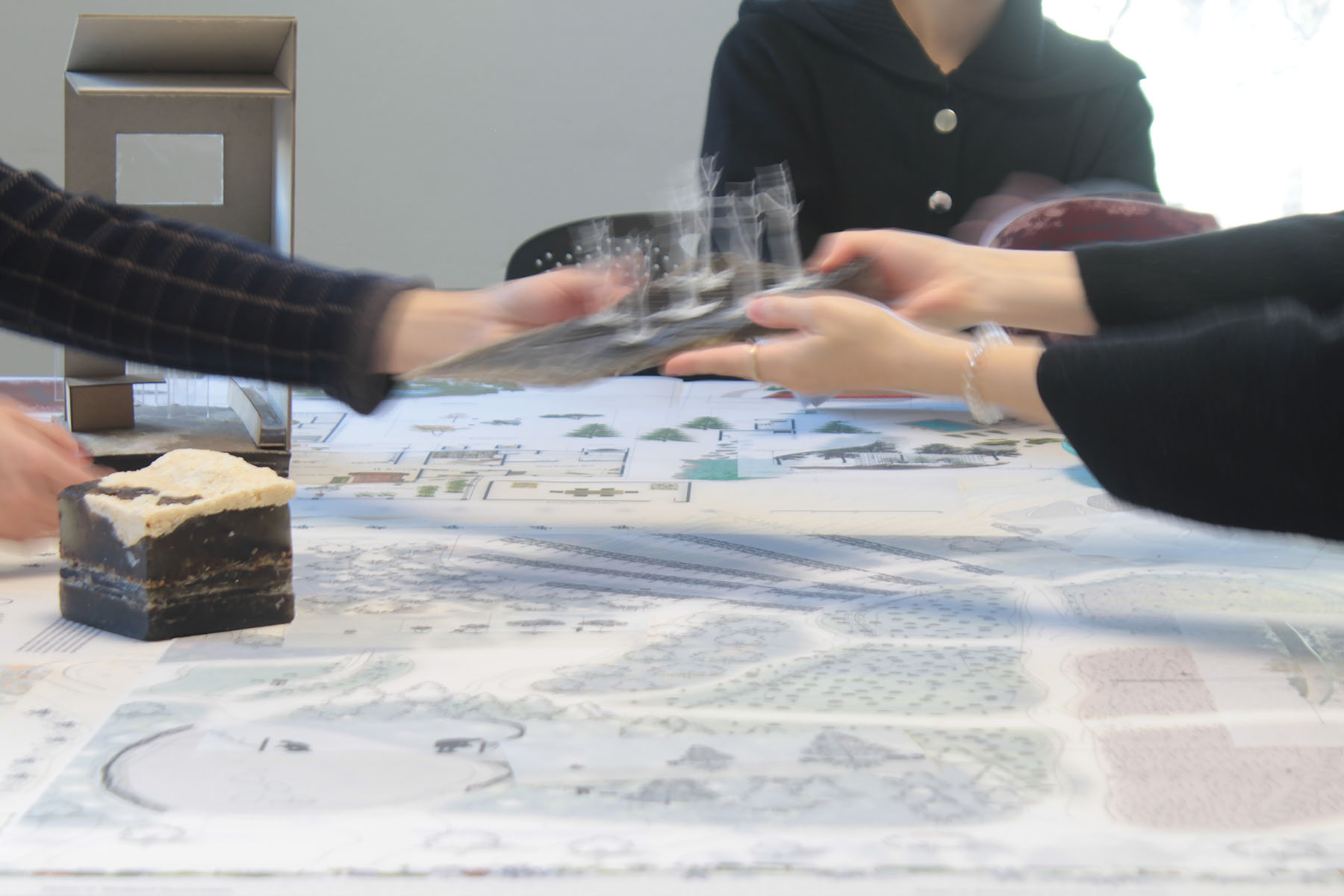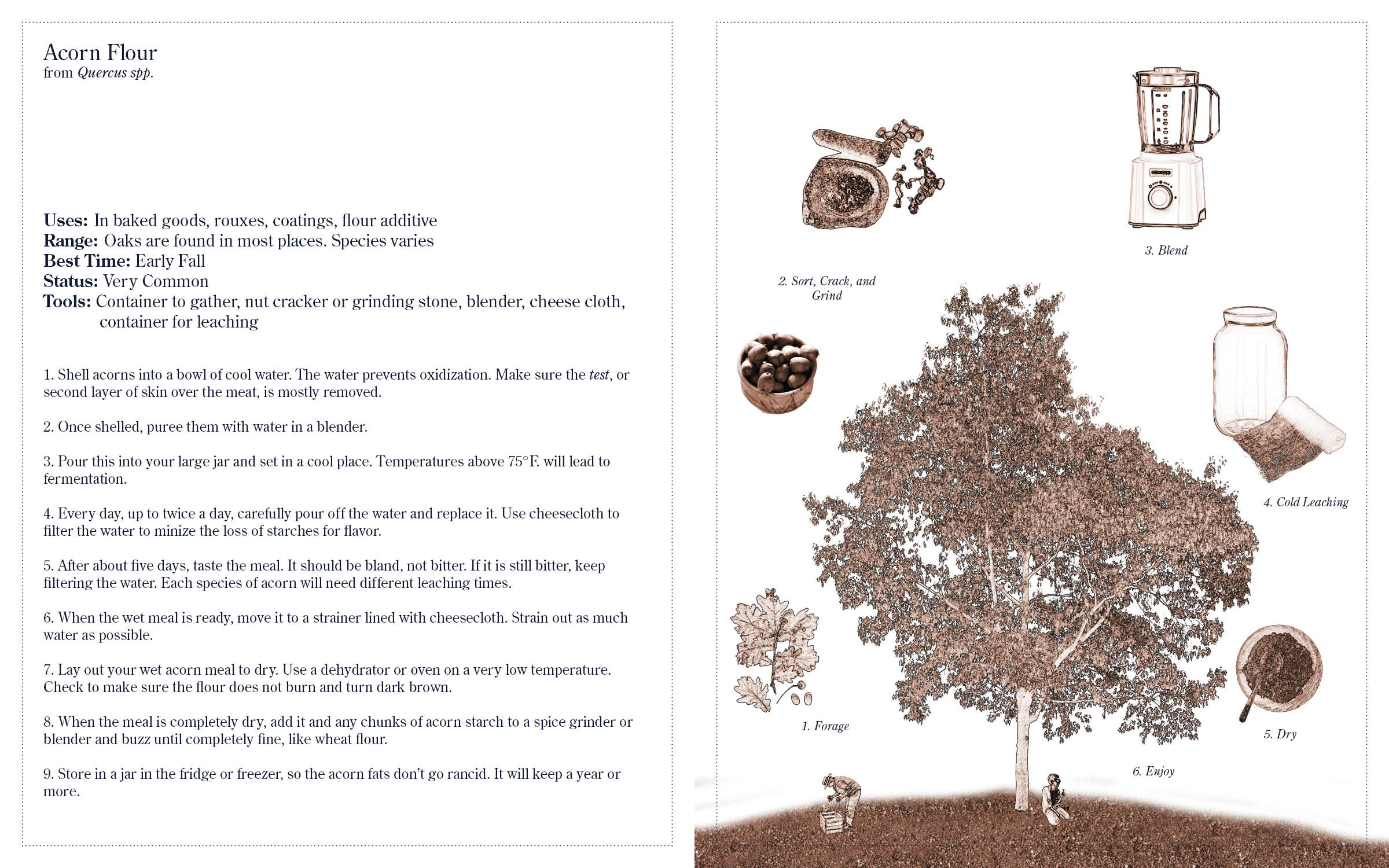foraging futures
Harvard Graduate School of Design
Wareham, MA
Prof. Rosalea Monacella
Fall 2022
A forest is many things: a home, a source of food, a habitat, a retreat, an inspiration. But through most of modernity, we have only understood them for one purpose: production. Foraging imagines a different life. In the future, residents come together to push for a new relationship with the forest, one that creates complexity, entangles life, and is constantly welcoming change. In the new foraging forests, multiple protagonists work together to create their future. After organizing into the Friends of the Forest, residents push for the formation of the Food Forestry Service, a governmental organization tasked with managing forests not for timber production, but as a polyculture food source by transforming the bogs back into wetlands. The former cranberry laborers organize to form the Gatherers Guild, working as foragers and stewards of the land in conjunction with the Food Forestry Service.
In the Food Forests of Massachusetts, there is no one story. Rather, multiple weave together, starting at different times and scales, lasting eons or only one season. Infrastructure intervenes to support emergent ecologies. Housing shifts toward the collective. Climate change brings new foods to the forest. Life returns in all its complexity.
In the Food Forests of Massachusetts, there is no one story. Rather, multiple weave together, starting at different times and scales, lasting eons or only one season. Infrastructure intervenes to support emergent ecologies. Housing shifts toward the collective. Climate change brings new foods to the forest. Life returns in all its complexity.













“Conceptualizing the world and making the world are wrapped up with each other” - Anna Tsing.
Foraging Futures was presented as a meal. The base linework was drawn onto a canvas tablecloth. Images were “served” to overlay this cloth and fill in the lines with the project. Different portions of the landscape, such as the former bog or the new collective house, formed different course.
Foraging Futures is a conceptual project (at the moment), but it was briefly made real during the meal-presentation. As I set this table, I wanted my guests to actually have a taste of this future, one that accepts this region’s heavily industrialized history and projects a future of gathering. I decided to share the knowledge I had gathered, first creating a field guide that collected my experiences. Some of the pages are shared here. It is not just visual identification, but a new way of seeing the forest. Foraging is may be a solo activity, but it’s knowledge is shared.
While working through this project, I spent the semester gathering acorns and transforming them into flour. Combined with other ingredients from the region and the supermarket, I made maple-acorn cookies to share together in anticipation and creation of this new foraged future.




